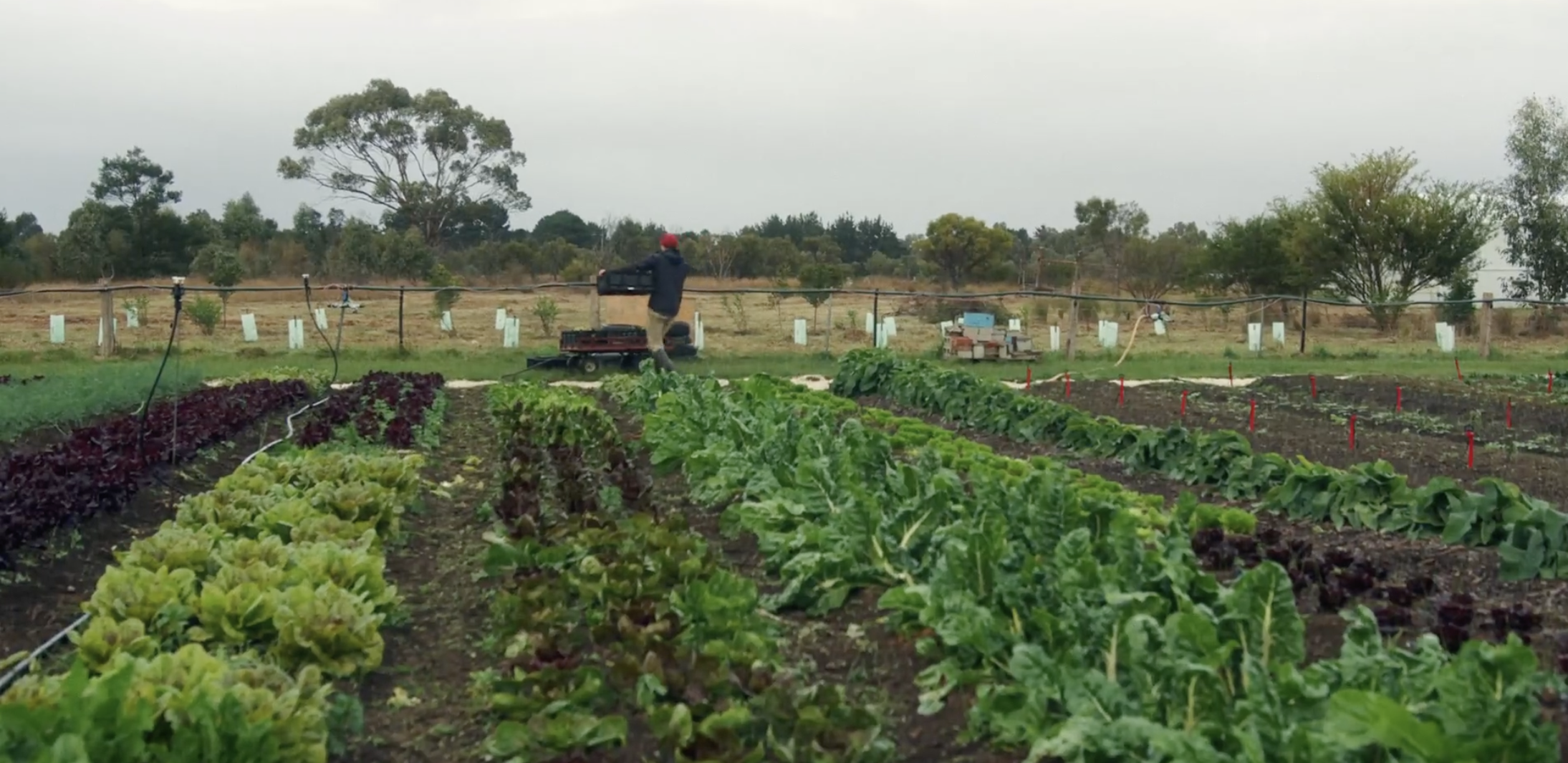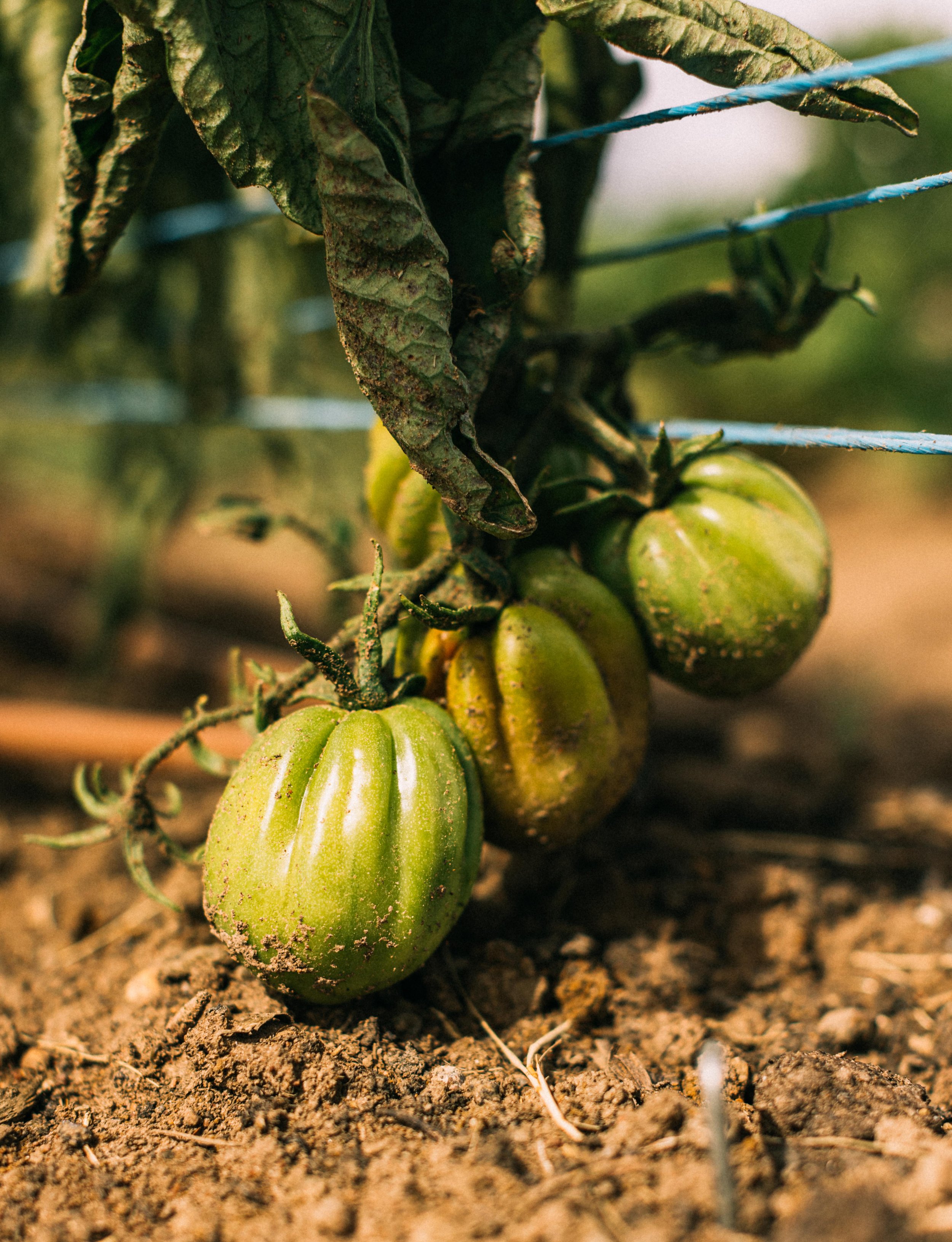
Our Farm
What is Regenerative Agriculture?
Regenerative agriculture aims to bring life into the soil and community. We do this by restoring microbial diversity and improving ecosystem health, while producing healthy and accessible food for all. Nutritious food is directly linked to the health of the soil that produces it, so we farm with the health of the soil and community in mind.
History of our Farm
Established in 2019, Common Ground Project has always been centered around growing and sharing food. What started as a small kitchen garden quickly grew into the surrounding paddocks. Initially, the main purpose of the farm was to provide a space for chefs from the city to come and connect with their food and grow produce for their restaurants. We are keenly aware of the often stressful nature of working in hospitality and hoped that the initiative would provide respite as well as tangible connection to our food system for the chefs involved in the program.
As luck would have it, the pandemic arrived not long after this program begun. Alas, chefs could no longer make it down to the farm, which at this point was still very small and underdeveloped. Instead, the farm managers got to work regenerating larger areas of land and opening up more space for growing. A greenhouse was put up, compost was made and spread across the beds, cover crops were grown, and lots of trees were planted around the food-growing areas.
Ever since then, the focus has well and truly been on creating a vibrant, healthy and productive community farm in what used to be a very barren and compacted patch of land. A wide variety of techniques have been employed to bring the soil back to health, and now 4 years down the track, we are exceptionally happy with the way the farm is performing.
Opening up new ground in 2019 80 beds now under production in 2023
The Importance of Small-Scale Farming
The farm is now a core business stream in our social enterprise, selling to restaurants in Melbourne, Geelong, and across the Surf Coast. The local community can access our produce through our Food Hub, which runs our online shop (selling veg boxes and other local products!) and regular stalls at local farmers markets.
As a community farm, we run weekly Tuesday volunteer programs which have been very popular among the local community and also run workshops and school programs on a variety of food-growing related topics.
Our mission going forward is to create a vibrant and biodiverse farm, provide an example of regenerative, community driven food production and show that it is both possible and profitable. We believe that people need locally adapted models as an example of what is possible. In the bigger picture, we need more small, ecologically focused farms that are willing to provide for their local community. We hope we can inspire others to take up this humble, yet noble pursuit.
We follow five main principles of regenerative farming:
PRINCIPLE ONE
Minimal soil disturbance - working with living soils
Tilling soil contributes negatively to soil quality by fracturing soil structure through the process of aeration. This can accelerate erosion as well as kill the soil microbiome and, importantly, the mycorrhizae and mycology of the soil, thereby blocking the ability of the soil to bring carbon out of the air. The practice of tilling is used to aerate soils for planting or to remove weeds, however over-tilling has damaging impacts on nature's systems. It is exacerbating the loss of soil on our planet's top soils, causing widespread desertification and releasing the carbon stored in the soil to the atmosphere as carbon dioxide contributing to climate change. For this reason, as a small scale regenerative farm we aim to minimise soil disturbance as much as possible.
In our bed preparation process we first begin by broad forking the soil to gently aerate the soil, improving water infiltration and helping crops establish deeper root systems. We then add soil amendments including compost, worm castings and rock dust to feed the soil with fertility. This is incorporated into the top layer of soil with a battery powered tilther, which breaks up hard rocky soil, cultivating the surface to form a fluffy humus that can be directly seeded into or transplanted.
Overall, we aim to minimise soil disturbance where we can, improving the architecture of the soil to ensure it has the ability to reabsorb carbon through the mycelial bed.
PRINCIPLE TWO
No chemicals - compost and organic matter recycling
There are many herbicides and pesticides out there. Thankfully, we use none of them. Instead we following organic farming practises, feeding our soil with excellent compost, worm castings created from our cafe food waste and rock dust.
We know that not only is food medicine, but it is alive. A teaspoon of rich soil can hold up to one billion bacteria and several thousand protozoa. Our compost ingredients include carbon and nitrogen from within the farm boundaries, with each input feeding different organisms of the soil food web. These organisms play an irreplaceable role in plant health and are among the best ways to introduce these organisms into your garden or farm.
PRINCIPLE THREE
Increase diversity - biodiversity and perrenials
Soil is made up of a complex host of symbiotic relationships which all thrive on diversity. This code within the blueprint of nature’s framework is an integral piece of the regenerative farming puzzle.
We increase diversity on our farm through growing a wide variety of organic seasonal fruits and vegetables, constantly increasing the soil microbiome, and improving the overall biodiversity on the farm and surrounding ecology.
On the farm, we have trees and perennials planted around the food-growing areas to form a windbreak and provide food and shelter for pollinators. This incorporates biodiversity and supportive planting techniques to create a diverse and integrative system.
PRINCIPLE FOUR
Cover cropping & green manures
As we are in the early stages of regenerating the soils on our farm, cover cropping is a best practise and cost-effective method for enriching soil health.
What’s the difference between a cover crop and green manure?
Green manures are a mixture of multiple species of grasses, grains and legume varieties grown in winter to build organic matter and capture nitrogen from the air to feed the soil. Our winter green manure mix includes a diverse mix of varieties which all feed specific microorganisms in the soil.
Cover crops are single variety plants which add biological activity to the soil, suppress weeds and when flowering provide pollination for bees. We use buckwheat as a fast growing cover crop between successions.
When grown to maturity, they are incorporated into the beds with the flail mower, then covered with tarps to decompose by soil microorganisms. This best practise method is highly effective in a minimum till system.
PRINCIPLE FIVE
Animal integration
Our farm is home to many animals, birds, insects and organisms that support the healthy function of the farm ecosystem. The health of the biodiversity of the farm extends beyond just the fence-line. They all have a role to play in supporting our regenerative practices.
Our flock of 50 chickens reside in our stationary chicken pen, and in a roaming chook tractor in the meadow where they are free to scratch around eating weeds, crop residue and build soil. They provide our cafe and markets with fresh, organic, and truly free-range eggs to the local community.
Our farmers move our roaming hens every week to keep them healthy and to forage on new grass. This regenerative rotational grazing practice allows them to spread their manure over the field, allowing the grass to replenish and increase soil fertility.









